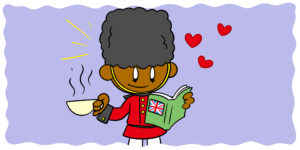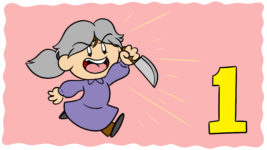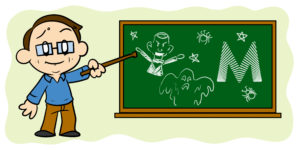Children are some of the most unique, misunderstood, and infuriating creatures on the planet. One moment they’ll astonish you with words of wisdom beyond their years, and the next, they’ll exasperate you with their stubbornness. It’s hard enough to write about children, but to write from a child’s perspective can sometimes push writers to the limits of their imagination.
So, how can you represent such complex and unpredictable little people in your writing? How can you get inside their world and look out from behind their eyes? I humbly offer the following three ‘P’s.
1. Proximity
The first and most helpful thing you can do is spend time with kids – especially kids the age of the character you’re writing. As with most other subjects you write about, there is an explicit knowledge that you can research, learn, and use to inform your writing. But then there’s intuitive knowledge – that particular type of knowing that you can’t put your finger on. It’s this type of understanding that yields the deeper insights into character and situation. It produces surprising intuitions about the direction of your story and the actions of your characters.
Personal experience is a form of research, and it leaves you with authorial intuition.Click To TweetThe best way to foster this deeper, more intuitive brand of knowledge is proximity. So, can you spend more time with your friends who have kids? Can you volunteer at a local club, faith community, or city or school event? Both observe children from a distance and engage them directly.
If you don’t spend time with kids on a regular basis, you may have forgotten that they have very definite desires, ideas, beliefs, fears, entitlements, and particular understandings of how life works. They have very distinct identities, despite their young age and despite the reality that those identities are in constant formation.
As you immerse yourself in the world of children, you’ll be so much more equipped to write from their perspective.
2. Perspective
So what specific tools allow you to transfer that insider knowledge to narrative insight? How can you take the lessons of real-life children and apply them to writing from a fictional child’s perspective?
Consider the following narrative tools and how you might use them to your advantage. The excerpts below are all taken from Lemony Snicket’s A Series of Unfortunate Events.
Figurative language
One of the best ways to tailor your writing to a specific character is through the use of figurative language, such as metaphor, simile, and personification. Hyperbole is excellent to use with children too, as their sense of imagination often lends them to exaggeration and excitement.
The figurative language a character chooses tells the reader a lot about who they are.Click To TweetThe main characters of A Series of Unfortunate Events are three siblings: Violet, Klaus, and Sunny Baudelaire. The older two are said to be highly intelligent children – Violet an inventor, and Klaus a serious bookworm. Sunny is the baby, given to chewing and biting objects with her astoundingly strong teeth. You won’t be surprised to learn that much of the figurative language in their story comes in the form of books, ingenious contraptions, and chew toys.
If you are allergic to a thing, it is best not to put that thing in your mouth, particularly if the thing is cats.
– Lemony Snicket, The Wide Window
Observation
The eyes through which children see the world are very different from their adult counterparts. They are encountering the events of life and its creatures for the first time; they have so few templates for what is real, acceptable, and appropriate. Their responses usually reflect this lack of practice, ease, and confidence. Sometimes they’re at a complete loss for how to handle or interpret first-time experiences.
In this early scene from The Bad Beginning, brilliant and creative Violet Baudelaire has just learned from a family friend, Mr. Poe, that her parents have died in a fire. Hearing his words, she thinks ‘he must be joking, playing a terrible joke on her and her brother and sister.’ Paragraphs later, Mr. Poe explains their fate:
“I was sent to retrieve you… I am the executor of your parents’ estate. That means I will be handling their enormous fortune and figuring out where you children will go. When Violet comes of age, the fortune will be yours, but the bank will take charge of it until you are old enough.”
Although he said he was the executor, Violet felt like Mr. Poe was the executioner. He had simply walked down the beach to them and changed their lives forever.
We might expect Violet to lean on Mr. Poe for comfort or ask him for reassurance. Instead, Violet associates this bearer of bad news with the fact of her parents’ death.
Dialogue
Dialogue is a tool not only to advance the plot but also to give insight into your child characters, especially their emotional state. Violet’s brother, Klaus – an avid reader and deep thinker – is normally levelheaded, controlled, and eloquent. But after being orphaned, mishandled by inept adults, and forced to live in inhumane conditions with his new guardian – the scheming Count Olaf – Klaus has had enough.
“If [our parents] were here,” Klaus said, his voice rising as he got more and more upset, “we would not be with Count Olaf in the first place. I hate it here, Violet! I hate this house! I hate our room! I hate having to do all these chores, and I hate Count Olaf!
Klaus’s hefty vocabulary and maturity disappear in his moment of despair. Make full use of dialogue to explore your characters’ volatile emotional landscape.
3. Psychology
The psychology of children is distinctive and complex. Their identity formation is constantly in flux as influences come at them from all sides.
Children’s influences are often identifiable – which adult characters inspired them?Click To TweetBy understanding the psychological context of these characters, you’ll be able to create a rich inner and outer world of the story. How do you do this? Try asking questions of the little ones as you would of your adult characters:
- What makes you feel afraid?
- What makes you happy?
- Who are your heroes?
- What’s your favorite thing to do?
- If you could go anywhere in the world, where would you go?
- If you won the lottery, what would you do with the money?
- If you were going on a long trip, what would you bring with you to keep from getting bored?
Try forming a personality profile from the answers to such questions. You’ll soon have a clearer image of what your child characters want from their young lives, what they believe about the world, who they aspire to be, and how they think they might get there.
The child’s perspective
In some ways, writing through a child’s eyes is the same as writing through an adult’s eyes: we all have fears, hopes, dreams, beliefs, and desires. But below the surface, children are wildly unique creatures who live from a place entirely different from their adult counterparts. Only by spending time with kids, getting to know what makes them tick, and understanding their relationship to their environment can authors accurately portray them in fiction. It’s an investment that will generate rich rewards for writers who are up to the task.
What insights have you gained when writing child characters? What tips can you share with fellow writers that will make their kid characters come to life? Who are some fictional children who loom large in your memory? Let me know in the comments.
For more great advice on this topic, check out Writing a Parent: The Dos and Don’ts, The Three Golden Rules Of Writing Children’s Literature and 5 Ways J.K. Rowling Can Help You Improve Your Writing.






4 thoughts on “The 3 ‘P’s Of Writing From A Child’s Perspective”
This is great advice for writing from the perspective of a child. Having four of my own with ages that range from 3 to 25 (don’t ask), I have the proximity thing down. I would add two things: try to write down exactly how they say things and take notes on the things they do that is foreign to adults.
My three year old has been known to say, “I hava furprise for you!” or “Dad, cun I gas on you?” or (in a quiet tone as he drifts off to sleep) “Dad? Can we eat cats?”
My eleven year old, having lunch with me in Las Vegas on her birthday, was asked if she wanted a shot. She immediately became very uncomfortable, shifted her eyes to me in an anxious way and said, “No? Why would I want a shot?” I told her not to worry because it didn’t have any alcohol in it, but she slouched lower in her seat. “But I don’t want a shot.” After I convinced her that it was okay and the waiter dropped some juice in her mouth, it hit me. My daughter is terrified of needles and to her a shot had only been known as something painful that happens in a doctor’s office.
Hi Katie,
Thank you for your excellent advice. I love the idea of writing down conversations with kids as a way of remembering and analyzing dialogue. Kids do have such a unique way of speaking.
Paige
I am having a lot of difficulty in this. In my novel I am writing about a group of children that witness an attack on their parents boss. (The boss is a vampire attacked by vampire hunters.) I sent an excerpt to my beta readers and they said that the ages of the children would not react that way. Their ages originally ranged from 9 to 13. (The children stayed calm and quiet, hid in the woods while witnessing the attack and then ran to get help from their parents.) I ended up increasing the ages of the children 11 to 15. I had the younger children cry. then had the older children cover the eyes and mouth of the younger children to keep them quiet. When they saw the aftermath of the attack I had the older boys cry and then vomit from what they saw. My readers told me this was much more believable. I wanted the children to be strong and stoic but that was not believable at all. My beta readers told me that adults would be upset by what they saw, children even more. Children should act like real children, not how the author wants them.
Hi Natalie,
Thanks for your comment. You’re absolutely right–sometimes we have an idea of how we think our characters should behave, but reader feedback reveals it to be unrealistic. I’m glad to hear you were able to find a solution for your book!
Paige